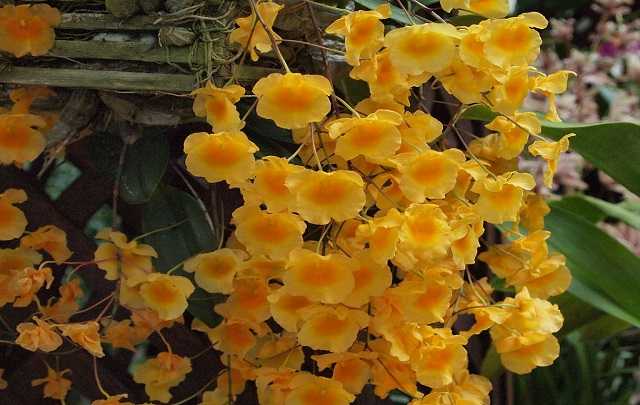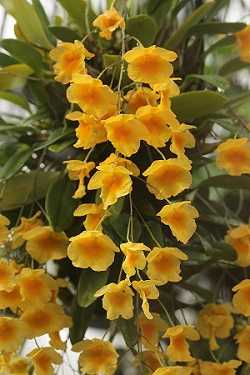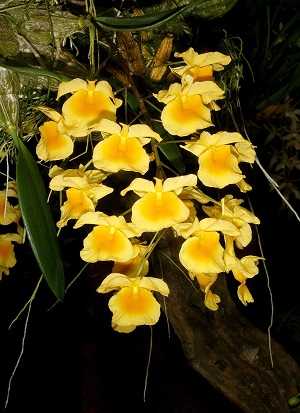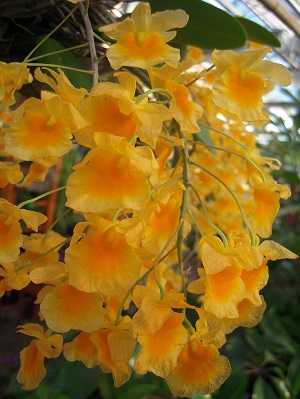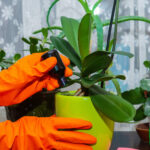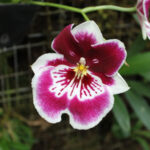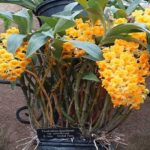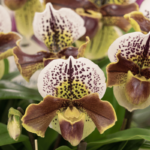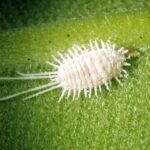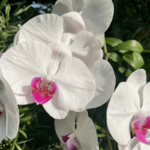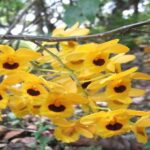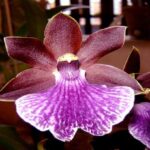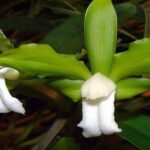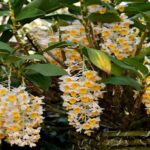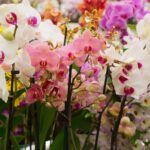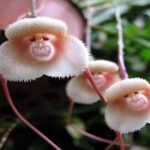Dendrobium aggregatum is a very curious orchid; to begin with, its correct name is Dendrobium lindleyi.
This name was a tribute to the famous botanist John Lindley, one of the individuals who contributed the most to the description of orchid species.
However, this orchid was not published by John Lindley but by Ernst Gottlieb von Steudel in the year 1840.
If you want to learn how to care for it and also what its main characteristics are, keep reading.
Learn How to Achieve Super Blooms on Your Orchids
🛑 If you love orchids and you're tired of not being able to make them bloom...
Then, know that thousands of beginner growers are achieving beautiful flowers on their orchids by following this method.
Click the button below to have beautiful orchids with show-worthy flowers every year. ⤵
Characteristics
These orchids are small, so they won’t take up much space in your home like vandas.
They usually have pseudobulbs that range from 5 to 10 centimeters and produce only one leaf.
These leaves are a somewhat grayish green color and are about 7 centimeters long.
Dendrobium aggregatum is an epiphytic orchid native to the following countries:
- India
- China
- Thailand
- Laos
- Vietnam
- Among other Asian countries.
It can be found at altitudes between 400 and 1300 meters above sea level.
Furthermore, a very important characteristic of its natural habitats is that they have great climatic variation throughout the year.
Basically, there is a lot of rain in some months, while in others, there is a drought.
Therefore, we must be very careful to try to mimic this when cultivating it.
Flowers
Like several other species of Dendrobiums, Dendrobium lindleyi has particularly yellow flowers.
But that’s not the only color they can have.
Additionally, they can appear in colors ranging from white to orange.
These flowers appear between September and October and last for 2 to 3 weeks if kept in cooler temperatures.
Each blooming produces between 5 to 15 flowers, each measuring between 3cm and 5cm in length.
One characteristic of this flower is that it emits a slight honey scent.
How to Cultivate Dendrobium Aggregatum
Cultivating Dendrobium aggregatum is considered moderately difficult.
This is because you have to take various different precautions, following the plant’s periods.
To learn how to care for this orchid, follow the steps below:
Humidity
This dendrobium is an orchid that lives in places with higher humidity, so we will mimic this factor.
In summer and during spring, you will provide humidity between 80% and 85%.
During autumn and winter, this humidity will decrease slightly but will still be high, around 60% to 65%.
To find out the humidity in your city, use a weather forecast website.
Temperature
Regarding temperature, this is a somewhat simpler factor for these orchids.
Basically, they like moderate climates, meaning not too cold and not too hot.
During summer, ensure that the average daytime temperature is about 25°C (77°F) and not much more than that.
Now, during winter, this temperature should decrease a bit, around 19°C (66°F) would be ideal.
In both cases, make sure there is a drop in temperature at night.
Potting Mix
The potting mix for Dendrobium aggregatum must serve two purposes:
- Anchor it in the pot
- Have good drainage
If the potting mixes you choose meet these two requirements, that’s perfect.
Some recommended ones are:
- Gravel (at the bottom of the pot)
- Pine bark
- Sphagnum moss
Choosing an ideal potting mix for your plant will greatly help you when cultivating your orchids.
Watering
Watering is the most important and trickiest factor when cultivating Dendrobium lindleyi.
But don’t worry, because now you will learn in a very simple and explanatory way.
Basically, this orchid uses more energy during its growth period and also during its flowering.
Consequently, during these periods, it also needs more water.
So, follow the tips below for each period:
Do You Want to Learn How To Keep Your Orchids Healthy And Ready to Bloom Every Year?
So, I prepared a complete guide, step by step and illustrated, that will show you:
• The secrets to getting beautiful flowers every year
• How to fight and identify pests and diseases on your orchids
• THE MAGIC SUBSTANCE for orchids and how to use it
• And much, much more.
The great news is that the manual is now available at a super discount!!
But beware, it's only for the first buyers.
Click on MORE INFORMATION below and discover the secrets to show-worthy flowers. 👇
Growth and Flowering
It usually occurs during spring and summer.
You will notice that this period has arrived when the flower stems begin to appear.
Here you will follow these tips:
- Water generously, but be careful not to overdo it
- Wait until the potting mix is almost dry to water your plant
Resting Period
This period starts in autumn, when the pseudobulbs begin to mature.
During these 3 months of autumn, you will gradually reduce watering.
Usually, a generous watering every 7 days is ideal, but this can vary according to your region’s climate.
During winter, watering should be practically cut off.
The only thing you should do to water your plant is a water spray every 2 days.
Remember, Dendrobium aggregatum does not tolerate wet roots in winter.
Fertilization
Like watering, fertilizing this plant will be discontinued during the resting months.
To have good fertilization for your plant, follow the tips below:
- Growth and Flowering: fertilize every 15 days with NPK 20-20-20 at half the recommended strength.
- Resting Period: stop fertilizing.
This way, you will ensure that your orchid stays healthy.
Ventilation and Lighting
Regarding ventilation, like almost all orchids, you must ensure that your aggregatum is in a well-ventilated place.
You don’t necessarily need to place it outside your home or apartment.
Just make sure that the place where it is has light ventilation.
As for lighting, it will also vary during this plant’s periods, basically:
- Growth and Flowering: plenty of light, always indirect
- Resting Period: increase light slightly, but still maintain indirect lighting.
To find out if your plant is receiving too much light, check its pseudobulbs.
If they are turning red, don’t worry, but if they start to burn, reduce the amount of light.
Conclusion
This was the article about Dendrobium aggregatum or lindleyi.
I hope you have learned how to cultivate these plants so that you can have great results with them.
If you want to learn more about orchids, access one of the articles below:
If you have any questions or want to comment on something, feel free, we are at your disposal.
Finally, if you liked it, help us reach more people, share this article on your social networks because it helps the site a lot.

